We visited Shenandoah National Park this evening to try and see a comet, C/2023 A3 (Tsuchinshan-ATLAS). The weather forecast was favorable and things looked good on our way in with clear skies. Unfortunately, it was quite hazy and some clouds rolled in to the west before sunset and our viewing turned out to be only partially successful.
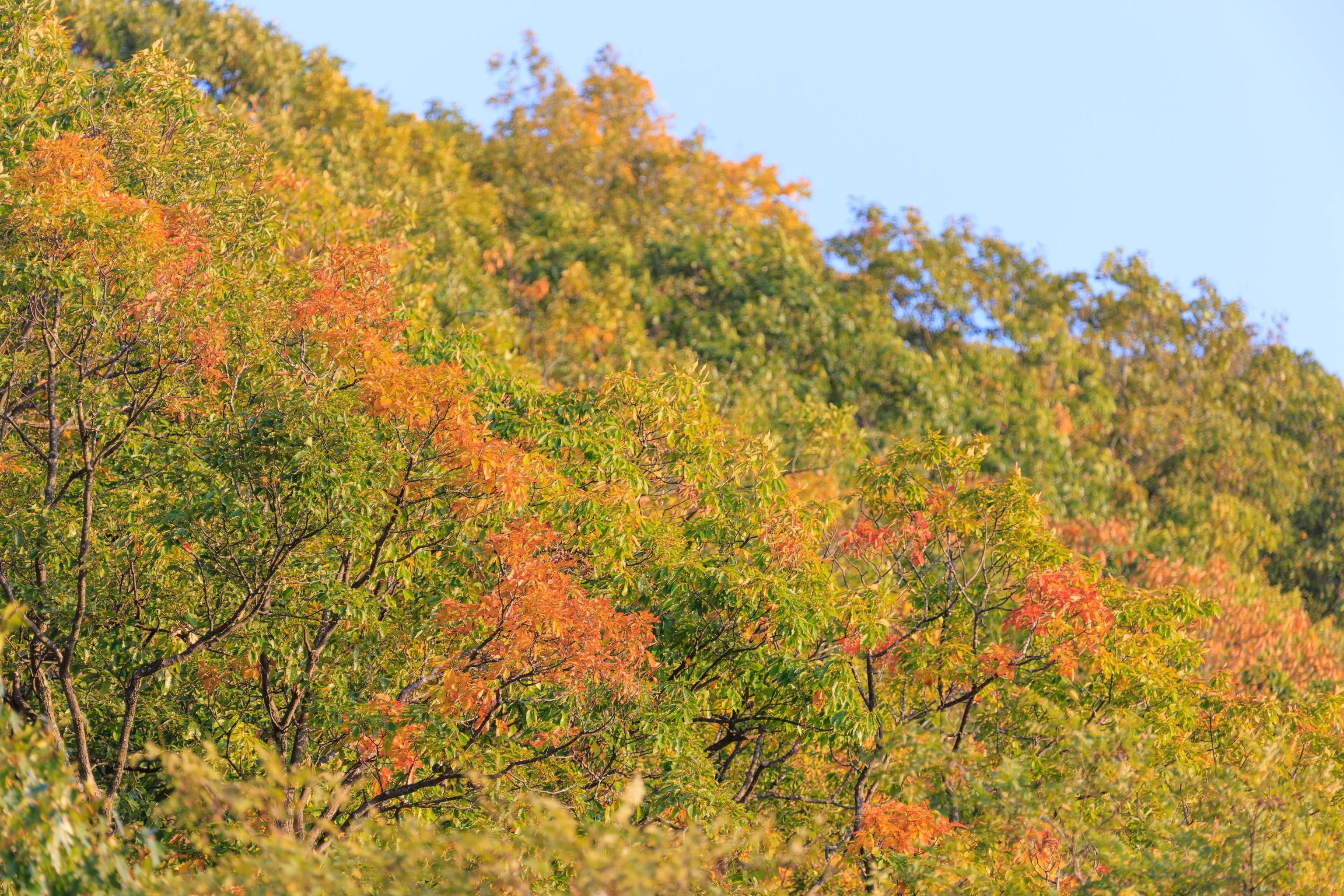
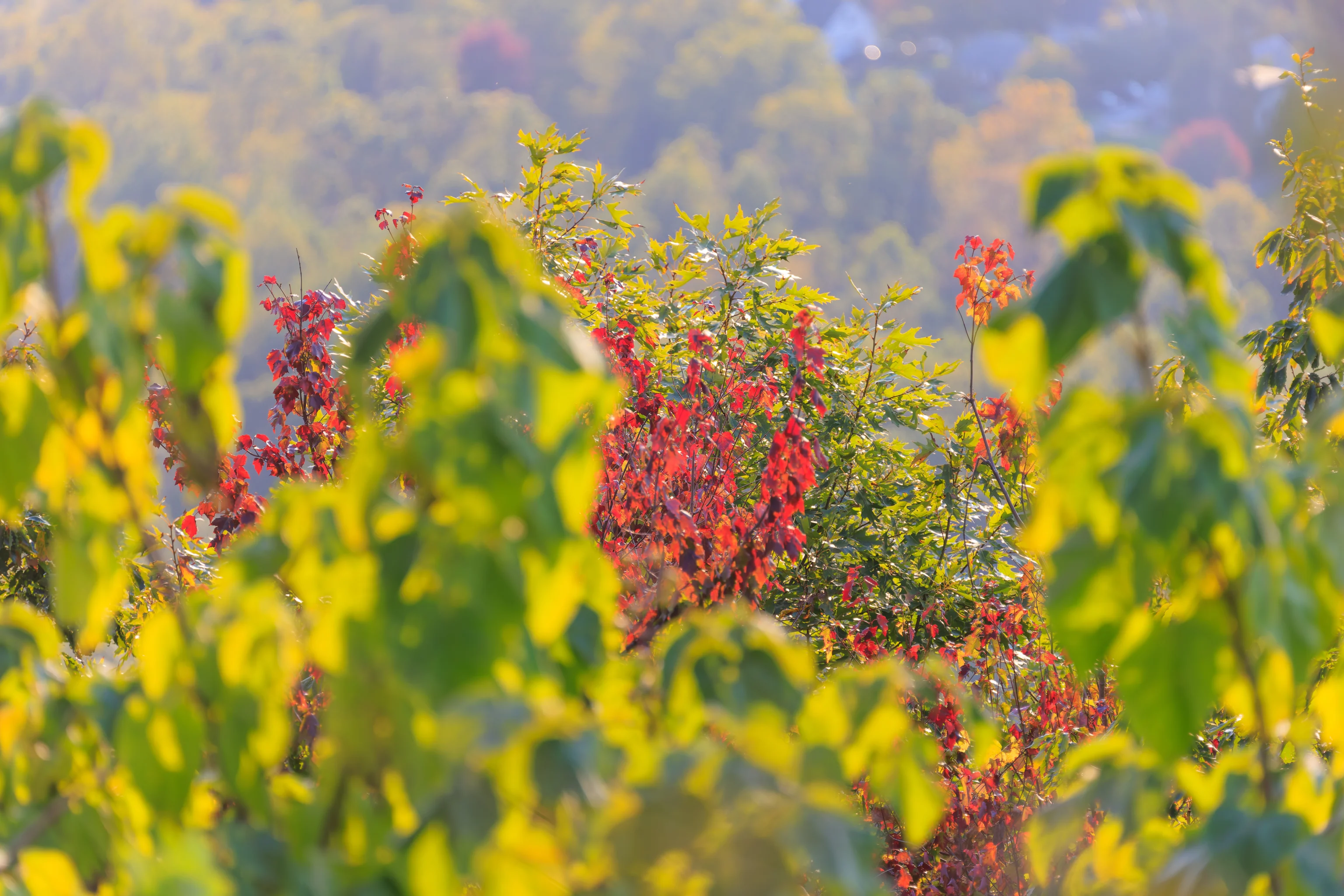
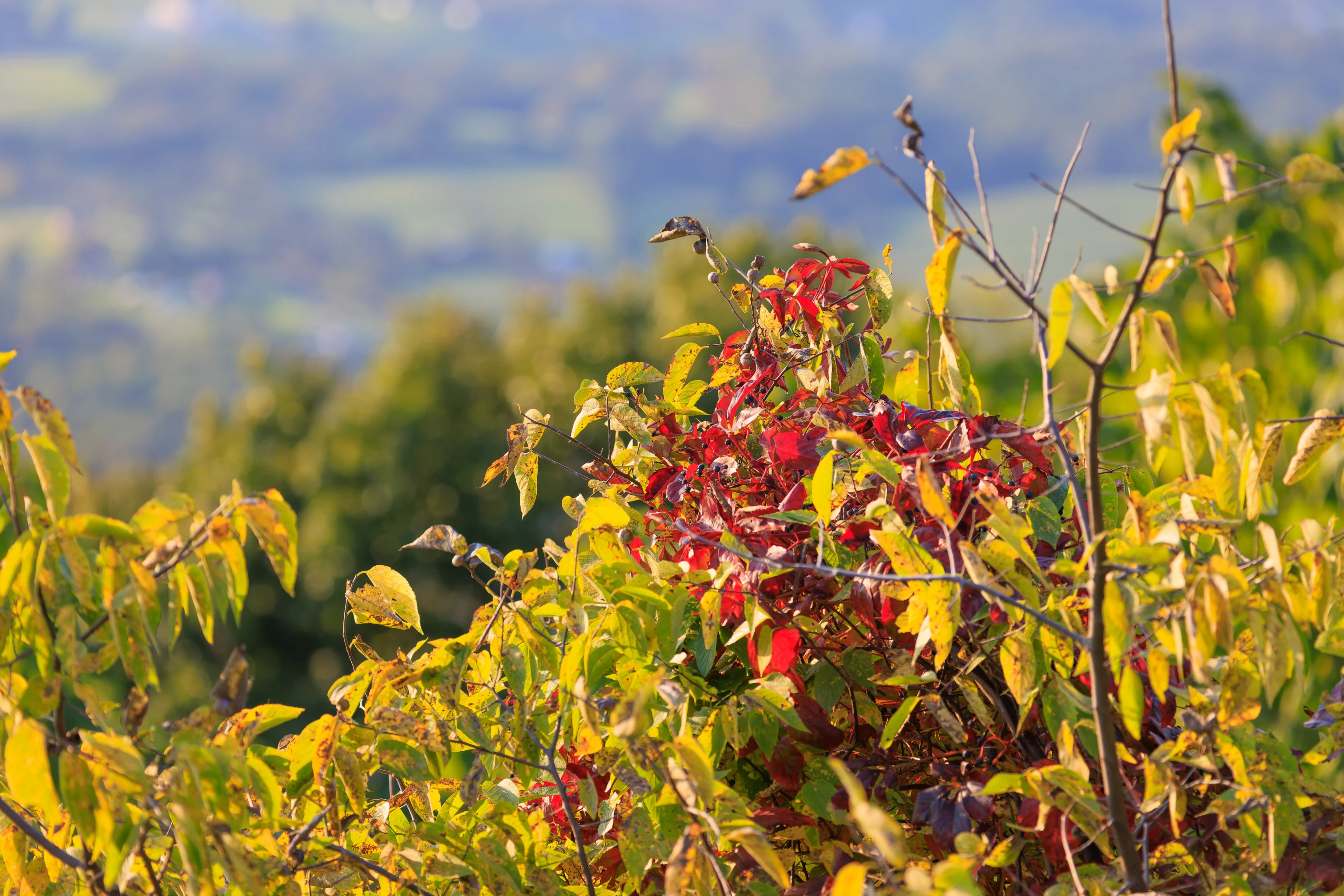
We arrived at Shenandoah National Park about 2 hours before sunset after joining up with friends in Front Royal. After a brief stop at the Dickey Ridge Visitor Center, we drove another mile south to the Signal Knob Overlook. It was extremely busy! But, we managed to find adjacent spaces right by the low stone wall at the edge of the overlook.
Fall has begun and some trees have started to change colors. We found a few examples but mostly, everything is still green here.
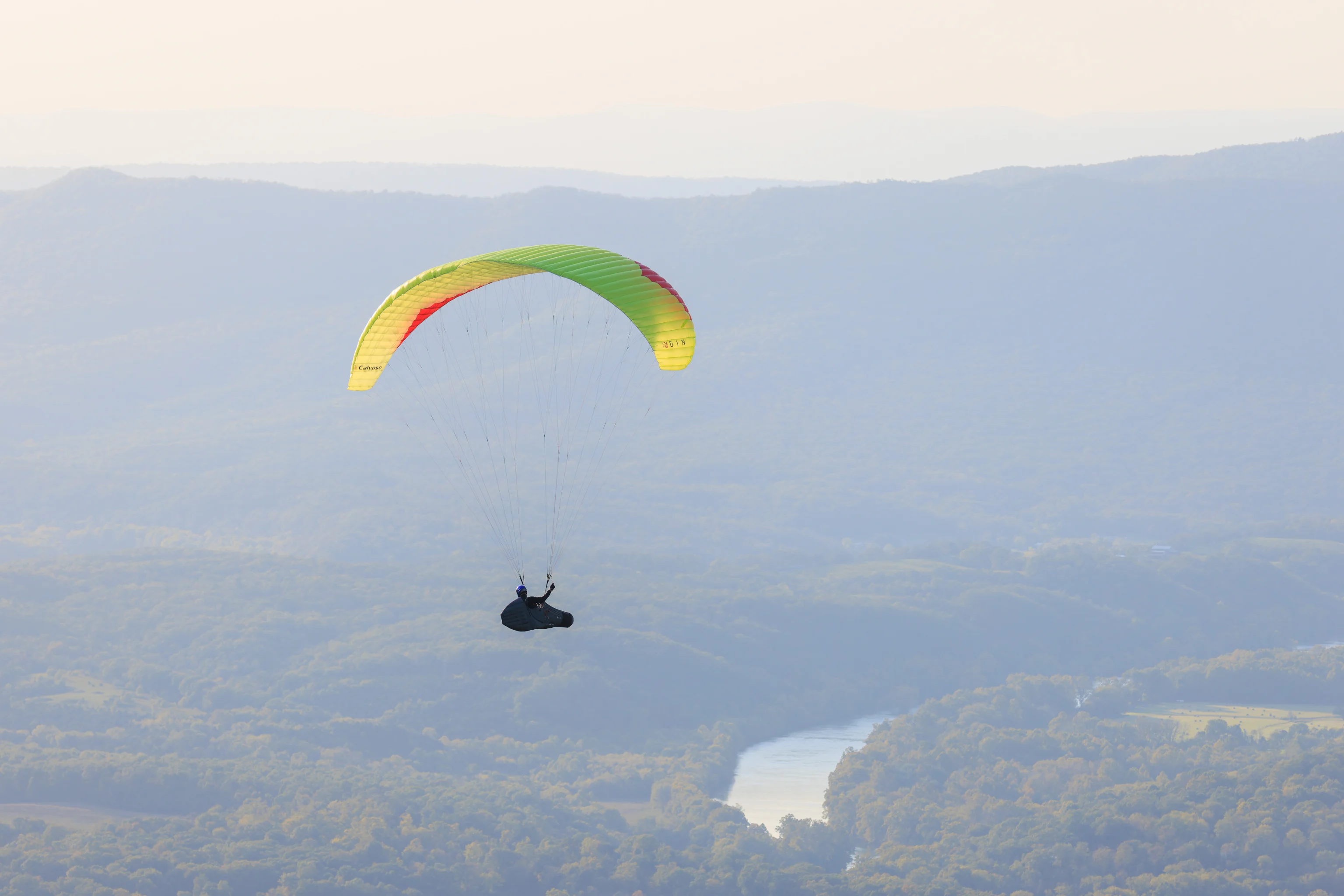
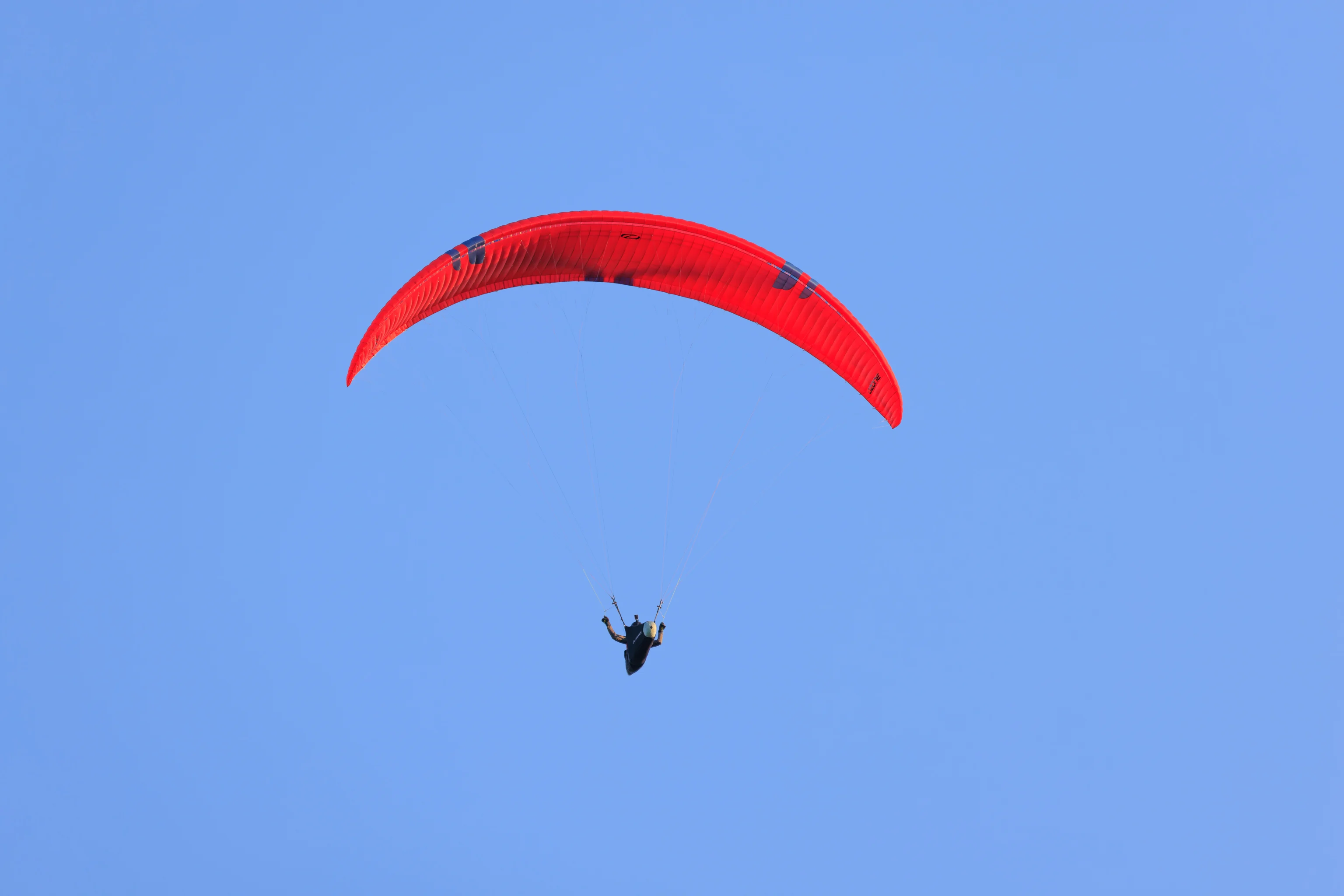
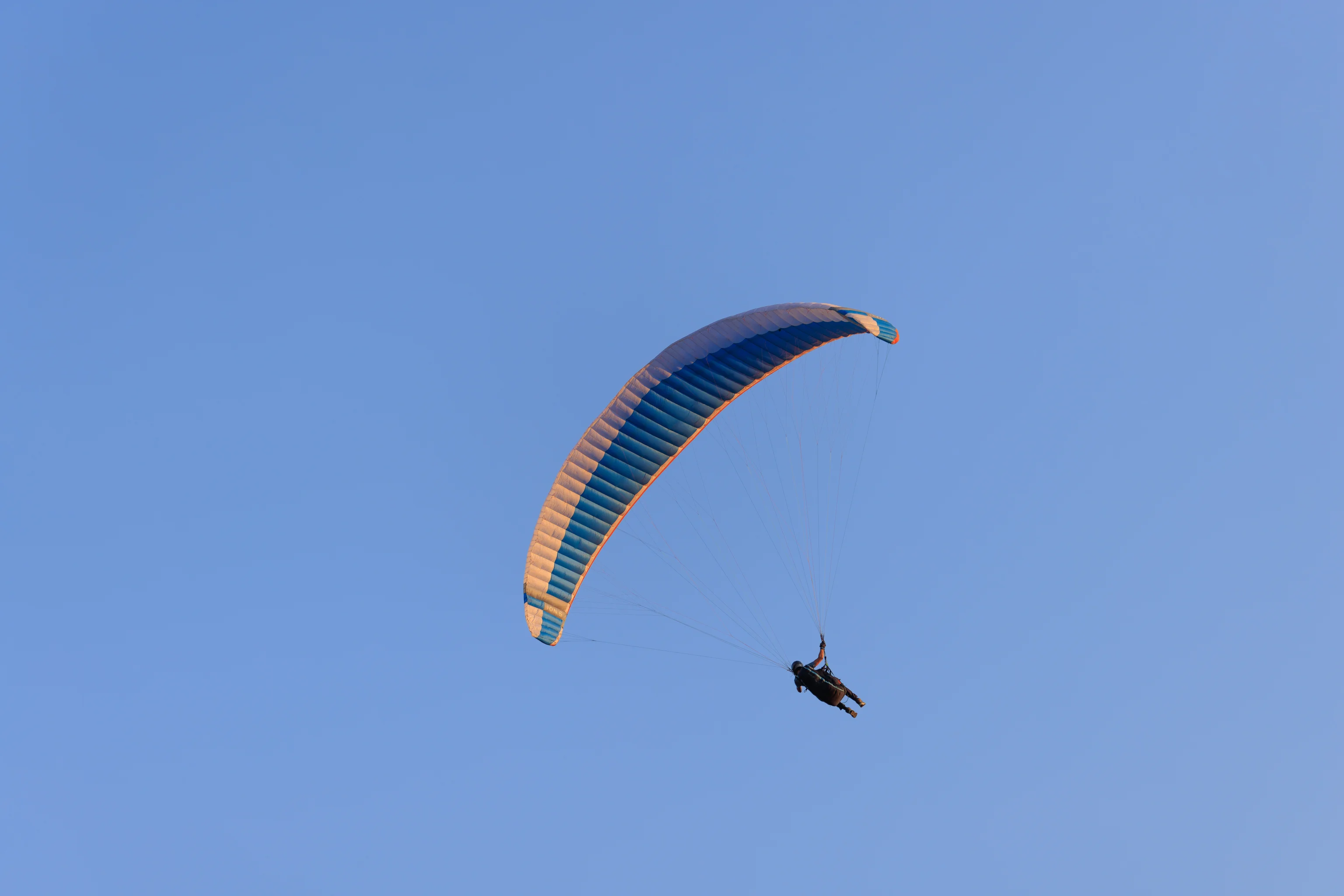
We saw three paragliders pass by. It was a bit reminiscent of the mountains in Switzerland!
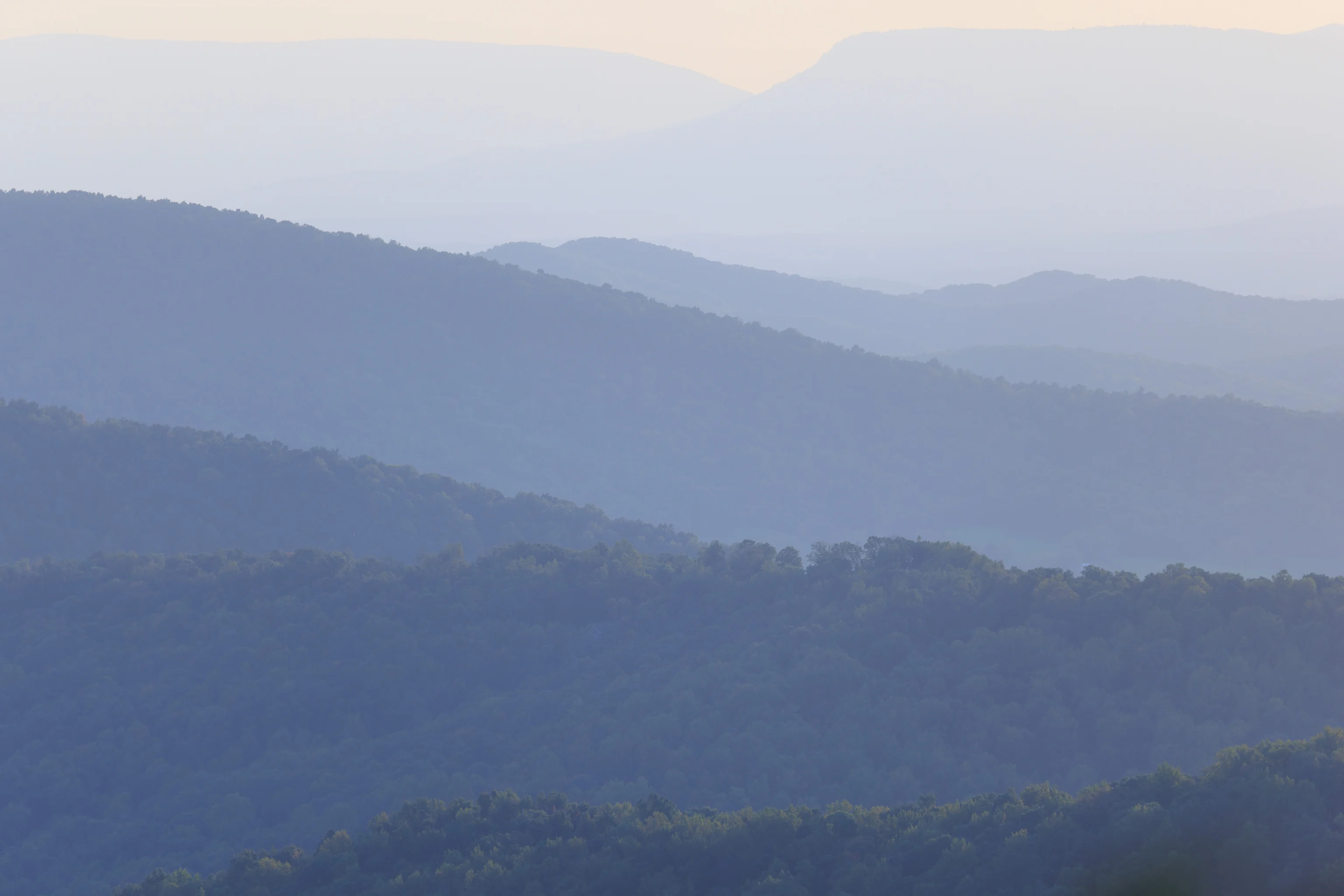
Looking on Stellarium, we knew the comet C/2023 A3 (Tsuchinshan-ATLAS) would appear roughly above and to the left of the sun, becoming visible not long after sunset. Unfortunately, it seemed very hazy. This was the view as we looked out to the west.
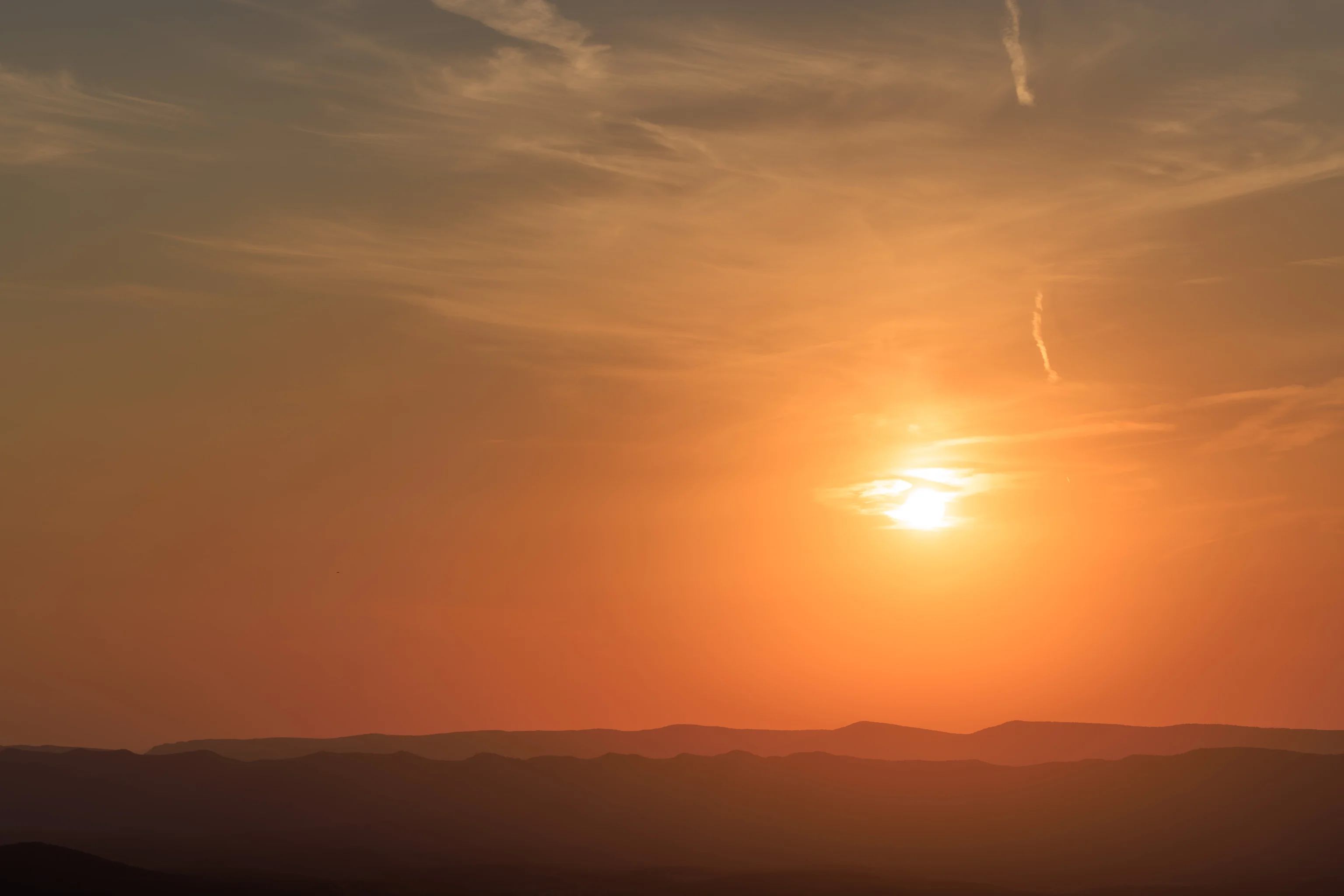
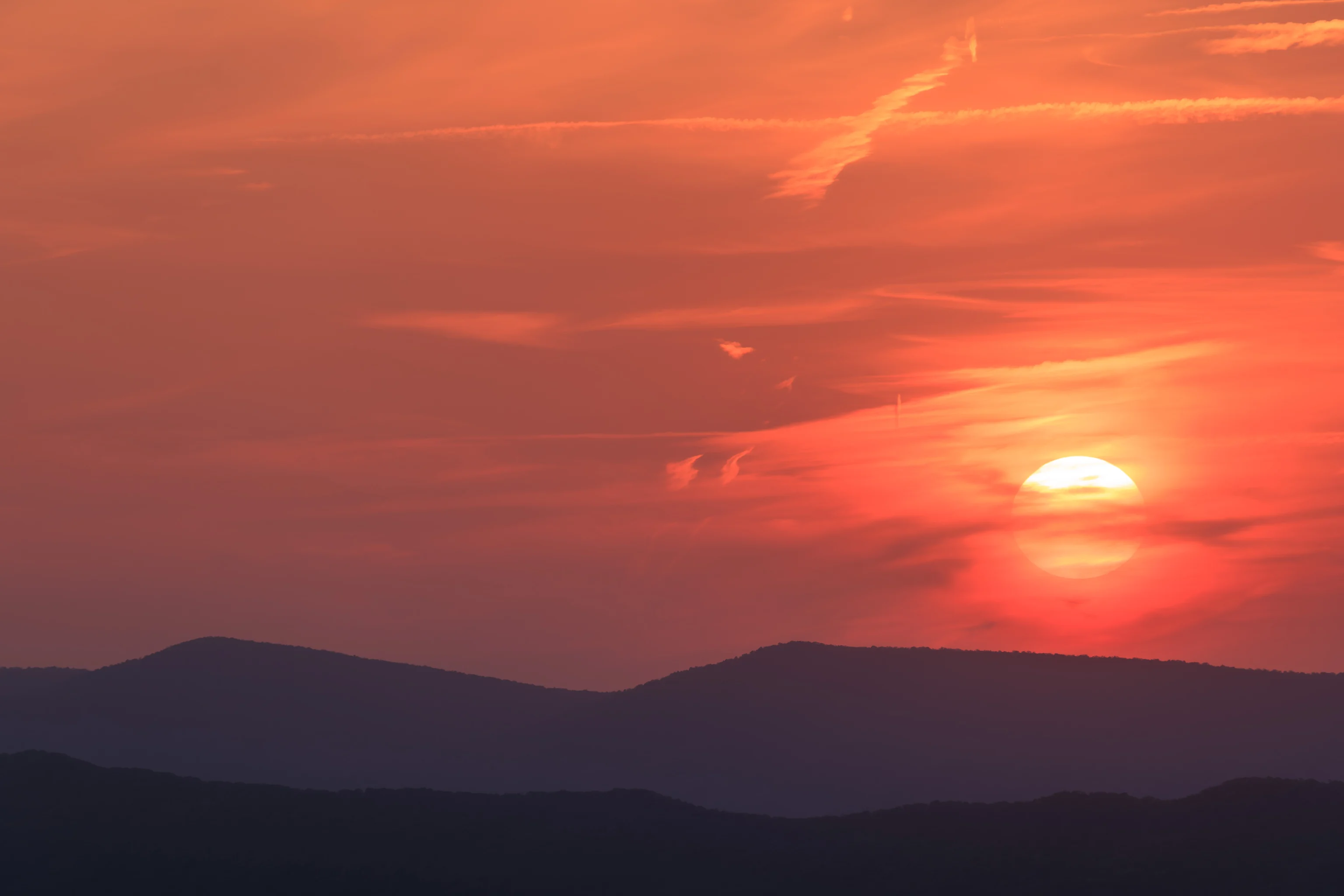
The sun went behind the mountains in the distance at around 6:34pm. Not only was it hazy, there were clouds in the area around the sun. The comet is supposed to be visible to the naked eye, but with clouds, it might not be visible at all. To aid trying to locate the comet, we noticed that it would appear to be roughly equal in elevation as Venus, which we could see once it got darker.
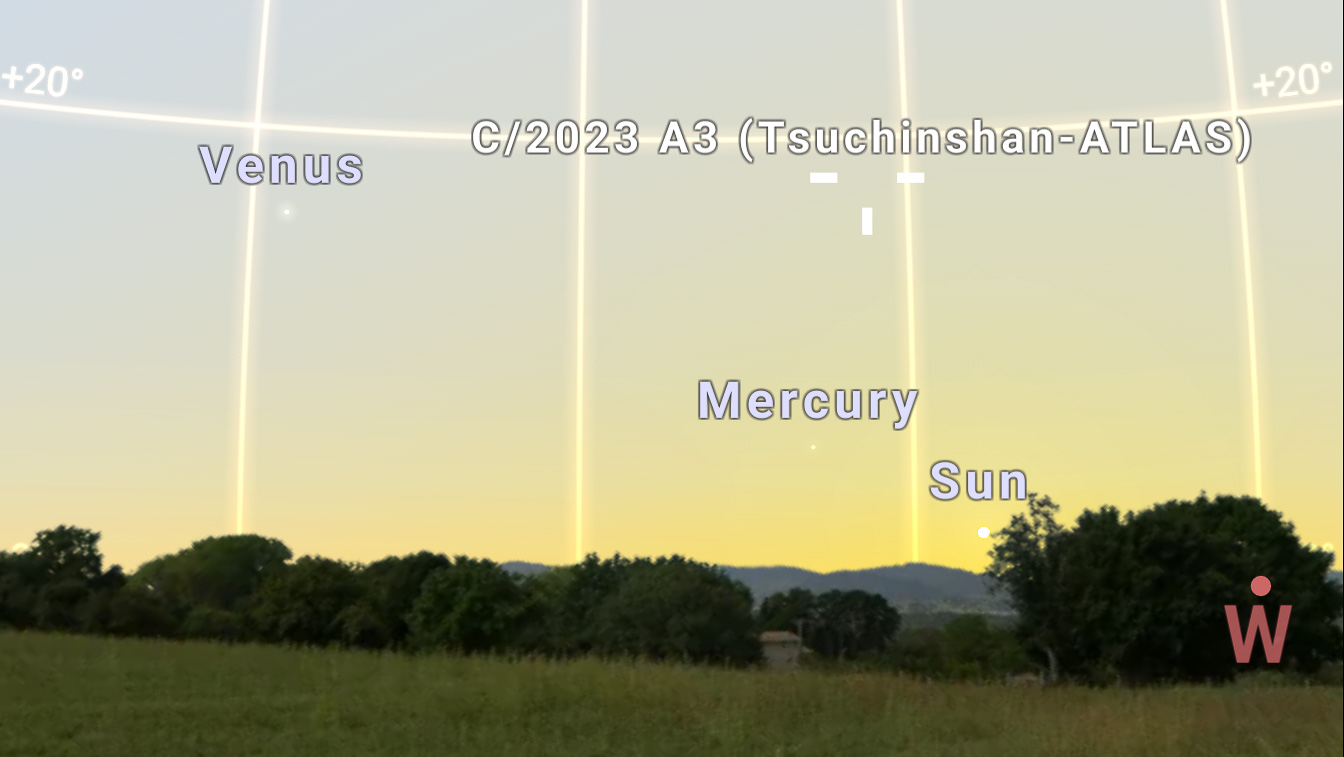
This is how the configuration would have appeared around sunset.
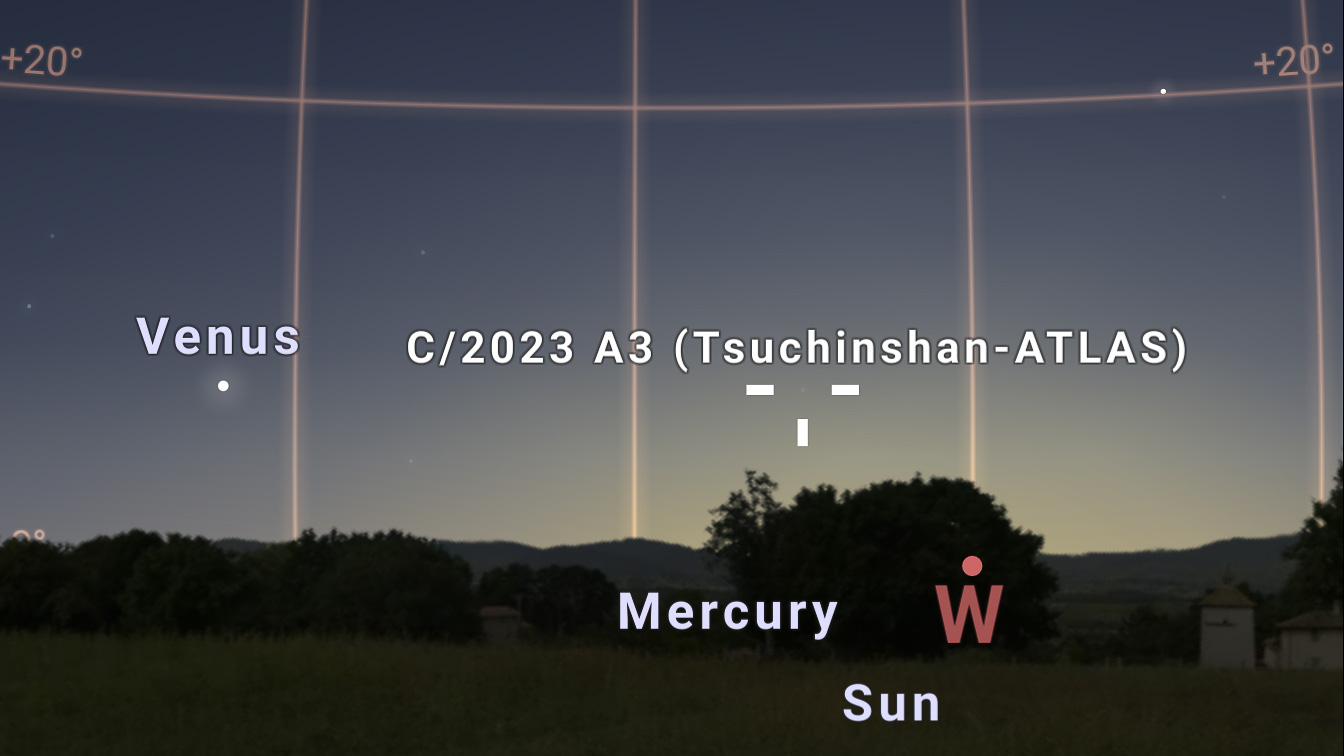
This is how the configuration is supposed to appear later on. The comet is always roughly in line with Venus, which we were able to easily find.
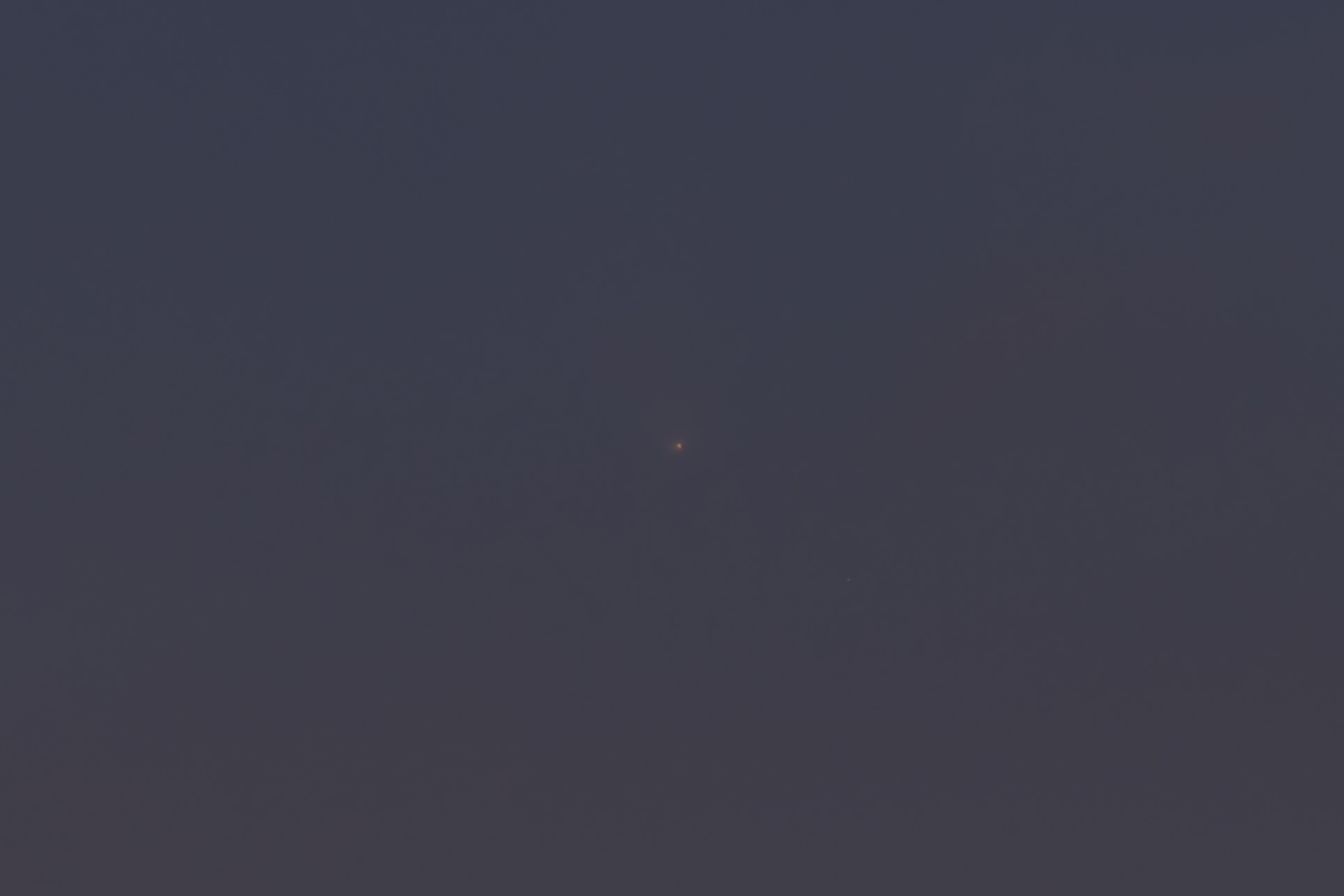
While looking in the area with the telephoto lens set to 400mm, we saw a little speck of light roughly where we expected the comet to be. It was more or less in line with Venus and above and to the left of where the sun went below the mountains.
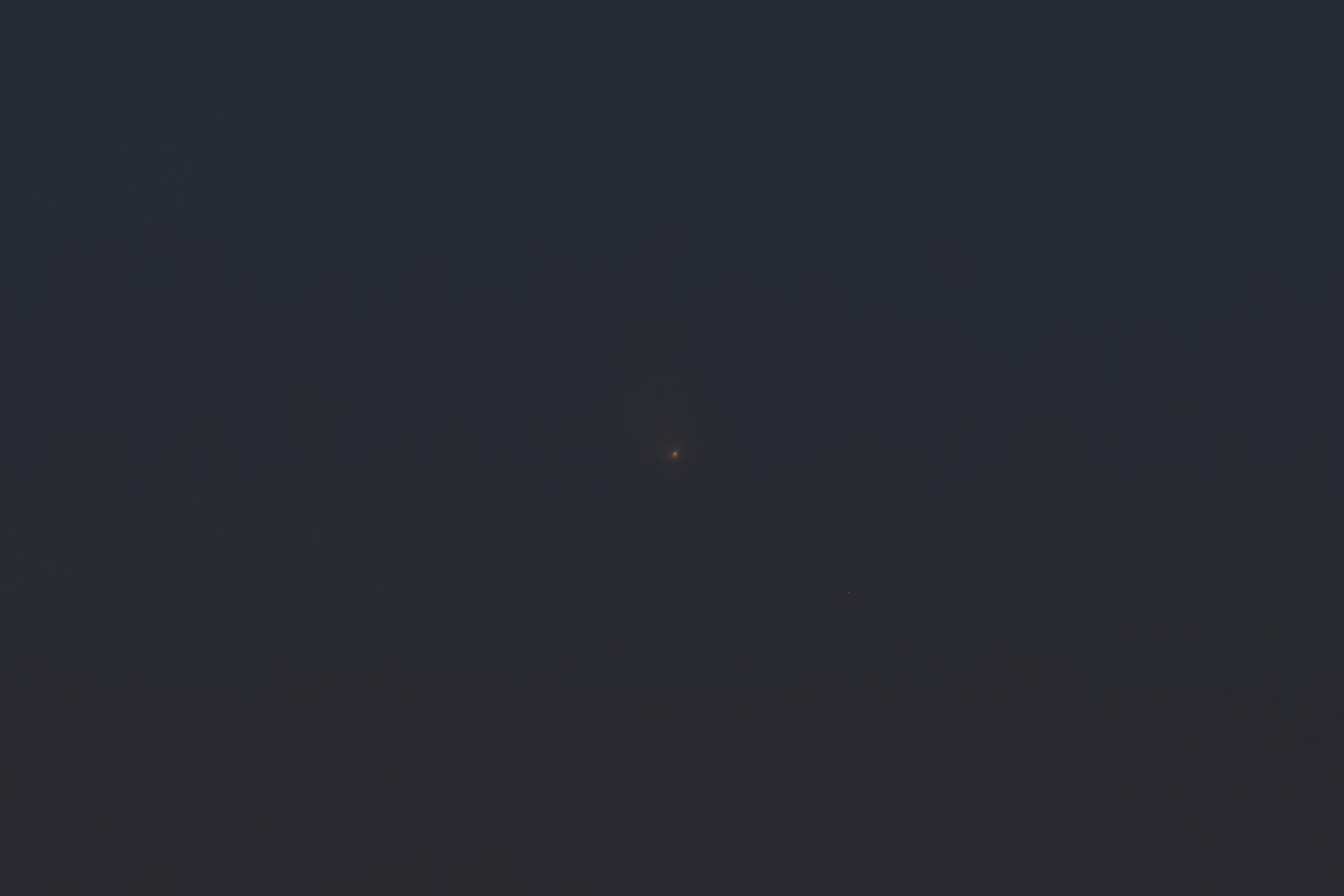
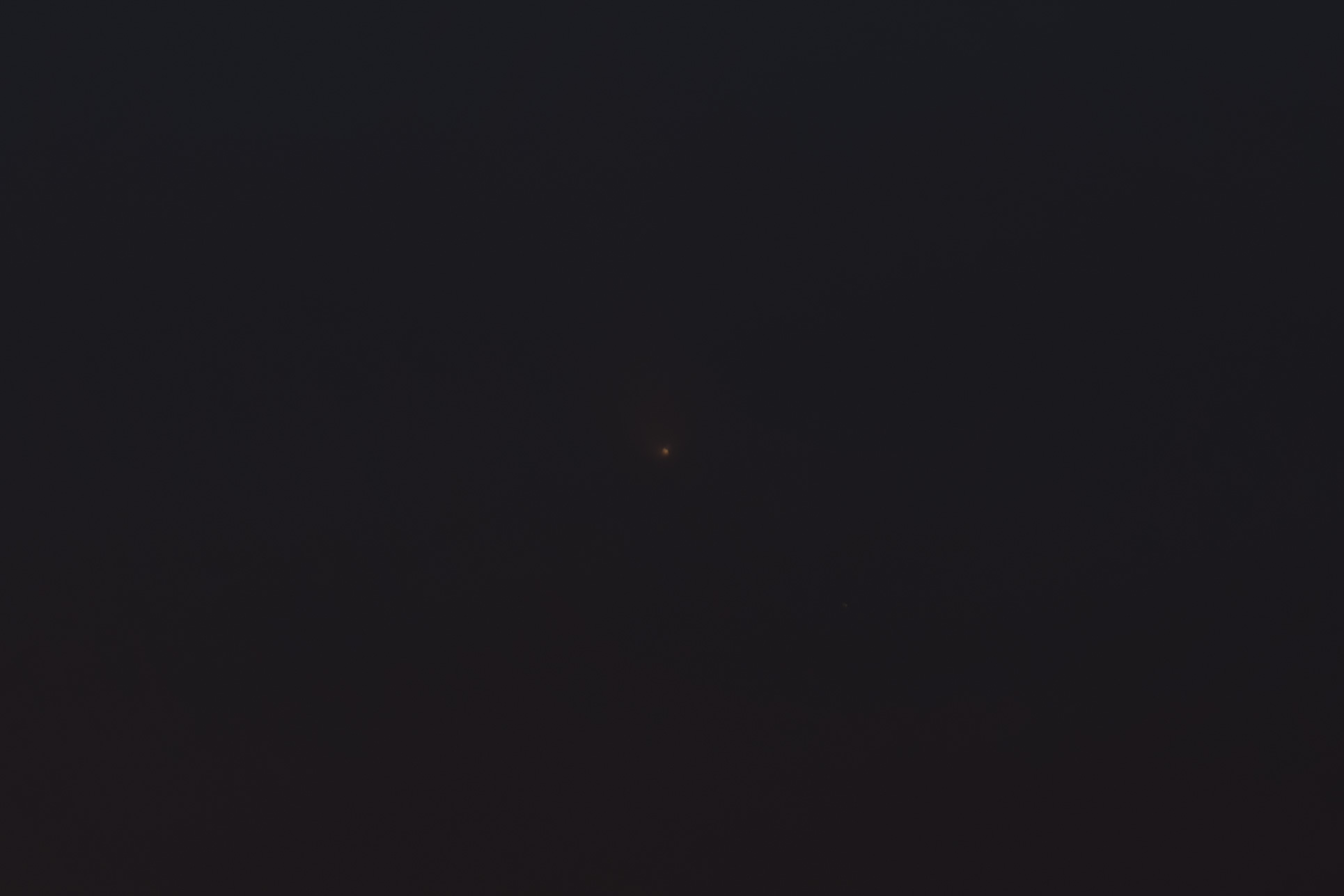
We followed it as the sky got darker. Its movement was in line with expectations. There is perhaps a hint of a tail, or at least a very slight increase in brightness, pointing away from the sun.
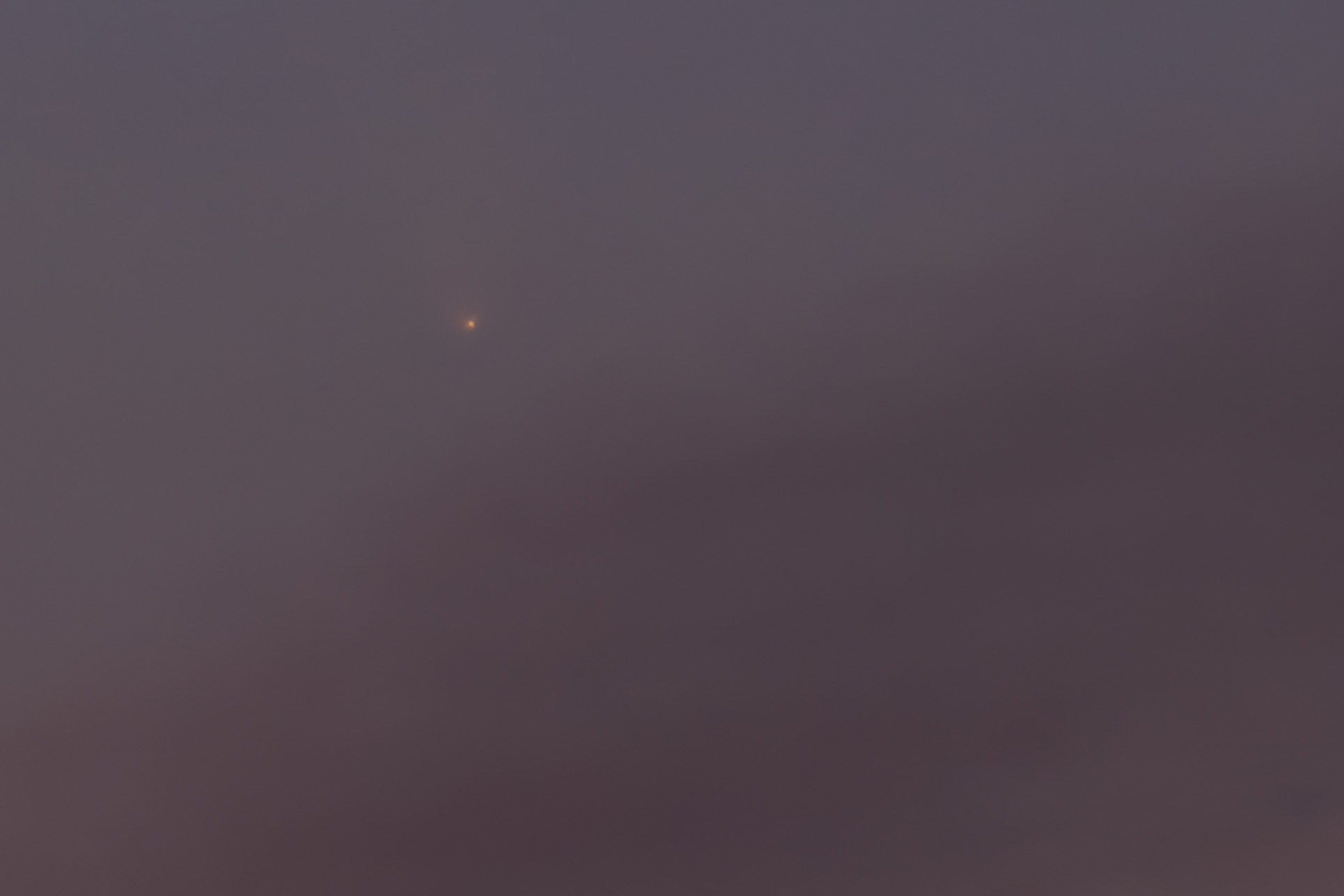
The increase in brightness here is due to changing from ISO 100 to 400, a two stop increase resulting in the scene being four times brighter. The motion of all the distant objects, like the comet, the stars, and the sun, is roughly to the bottom right, or 135° from up.
Although it was pretty dark out, we could see through the camera that the comet was about to be obscured by clouds.
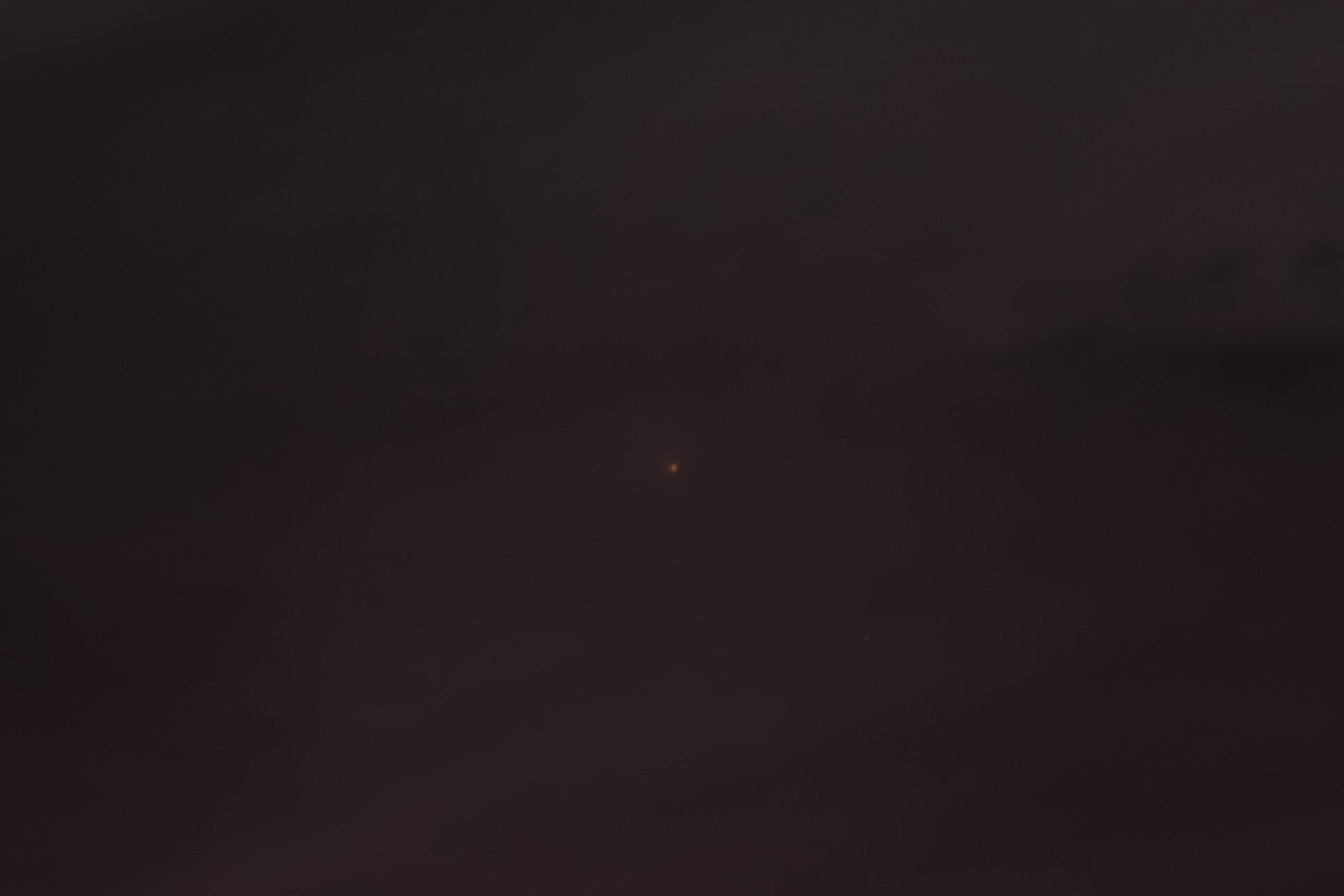
We still managed to see it as it entered the cloud layer.
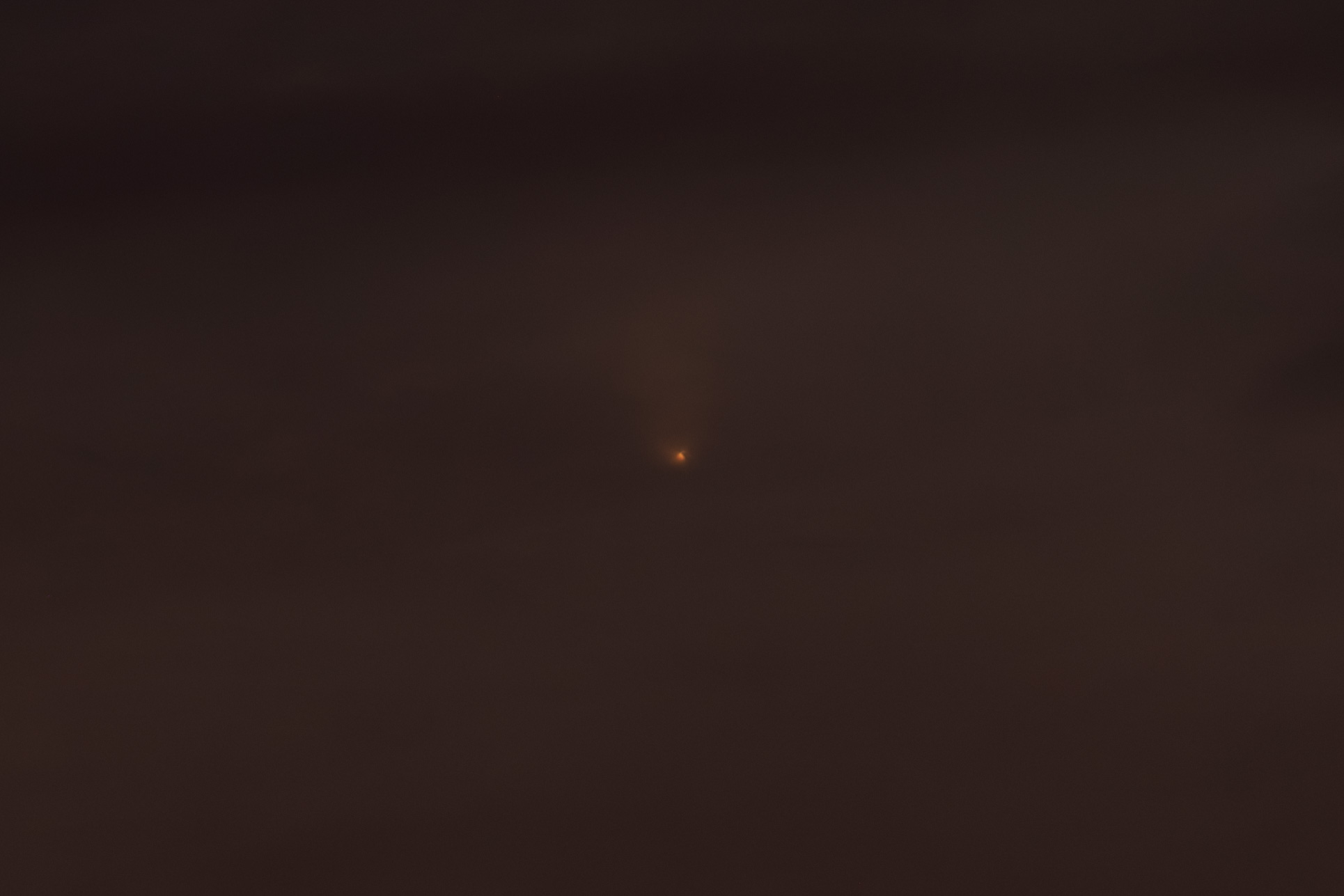
We increased from ISO 400 to 1600, again resulting in a four times increase in the amount of light reaching the camera’s sensor.
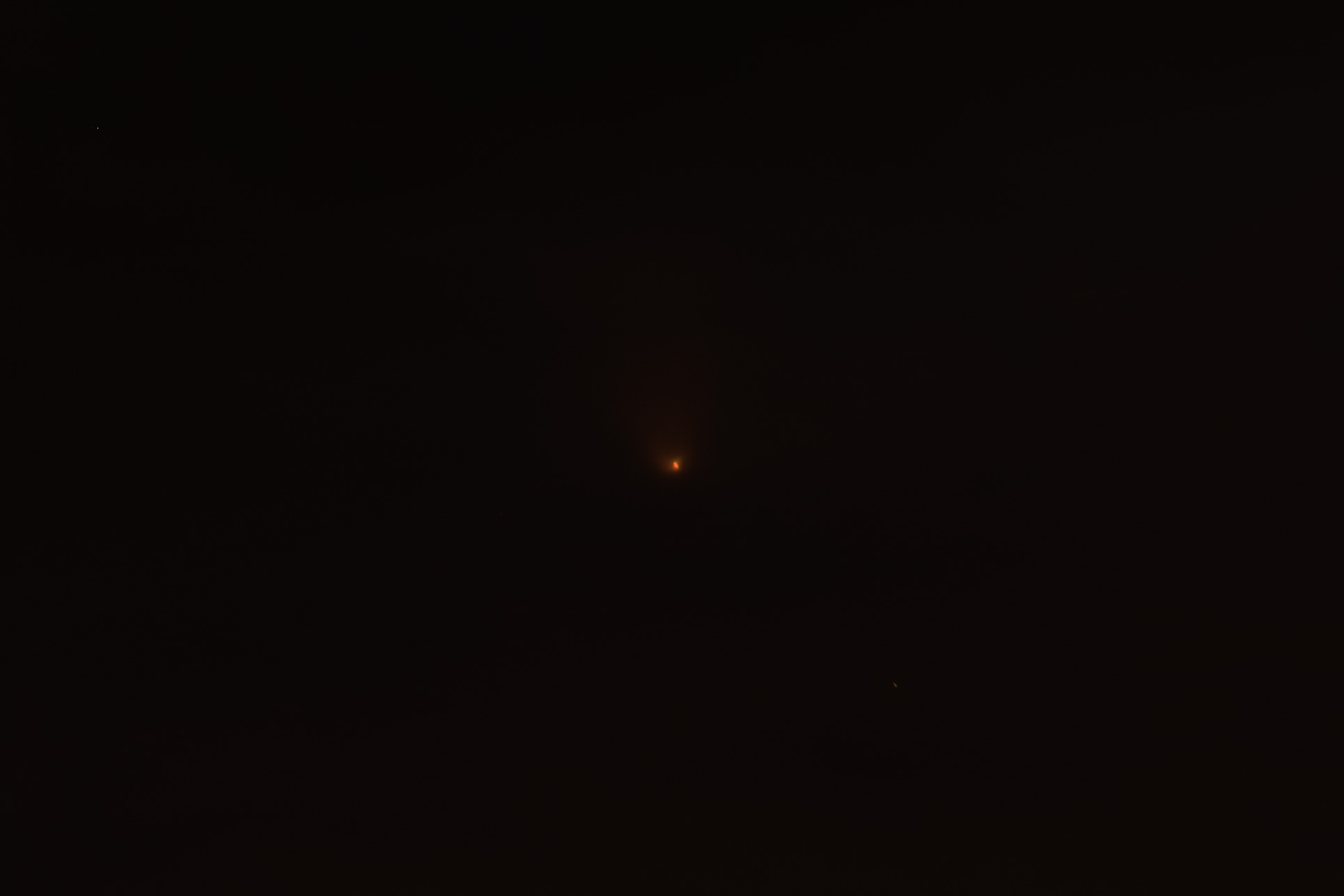
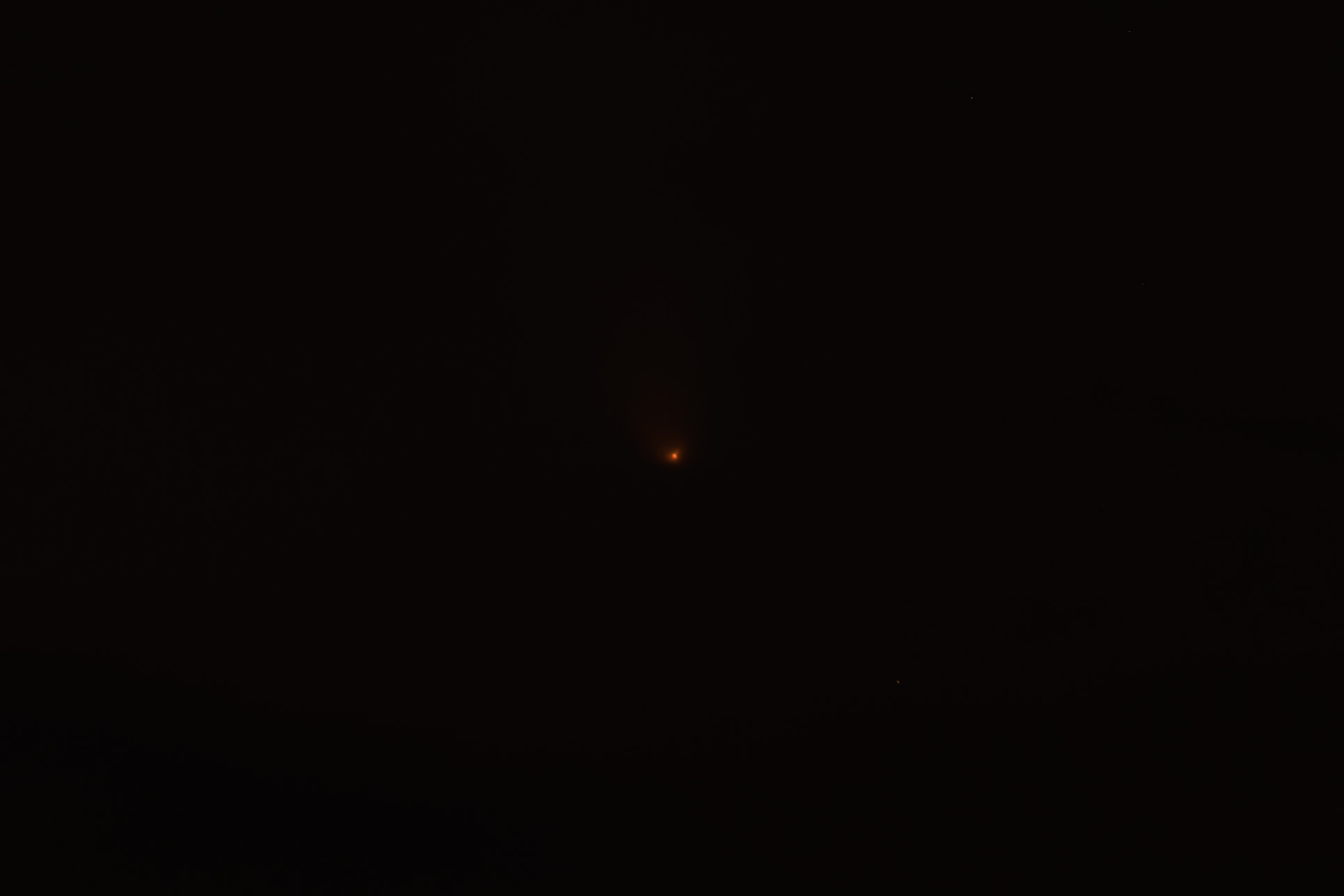
By now, it was about 7:35pm and the sky was pretty dark. We somehow were still able to track the comet, though it disappeared from view a few times, likely due to the thickness of the cloud layer.
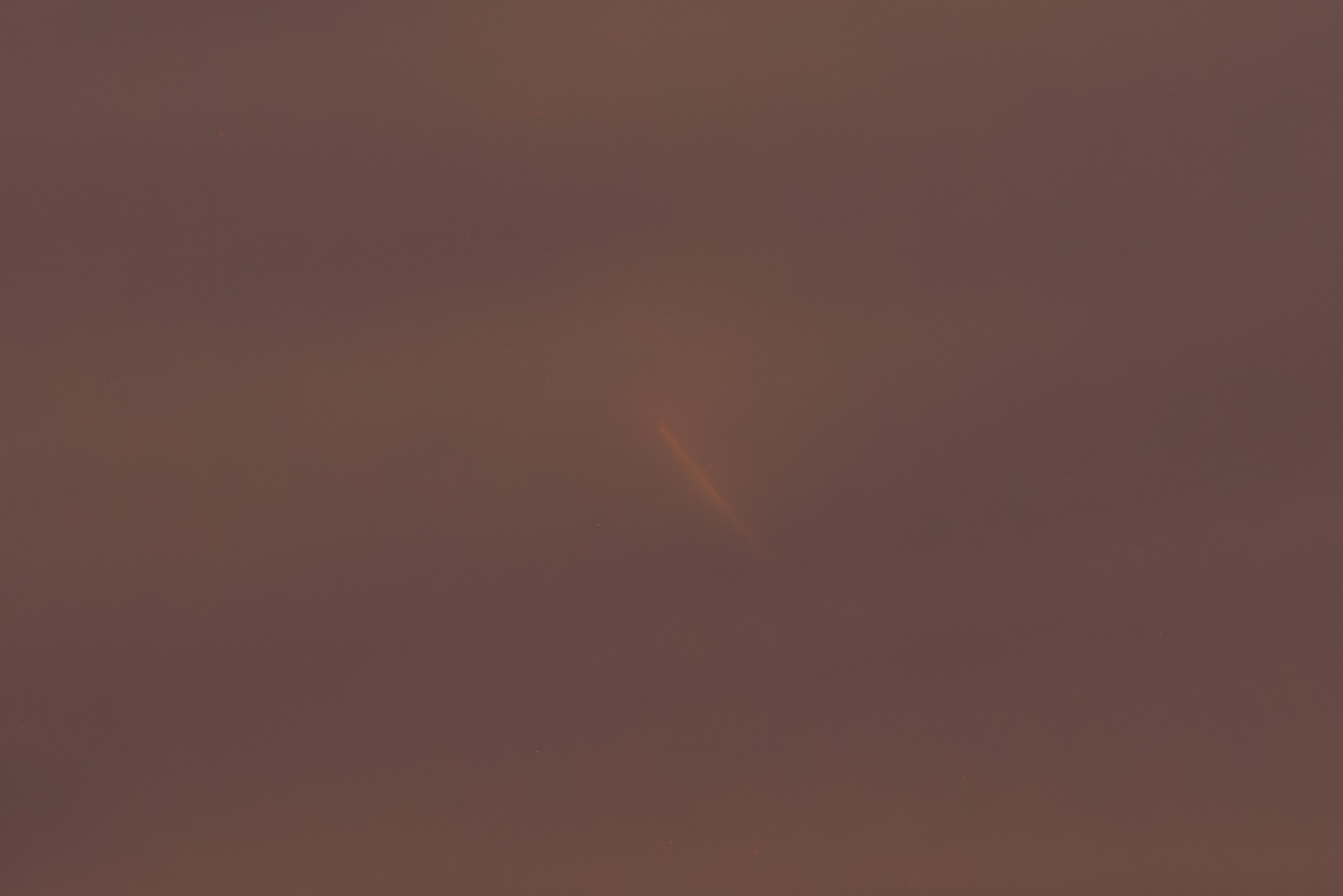
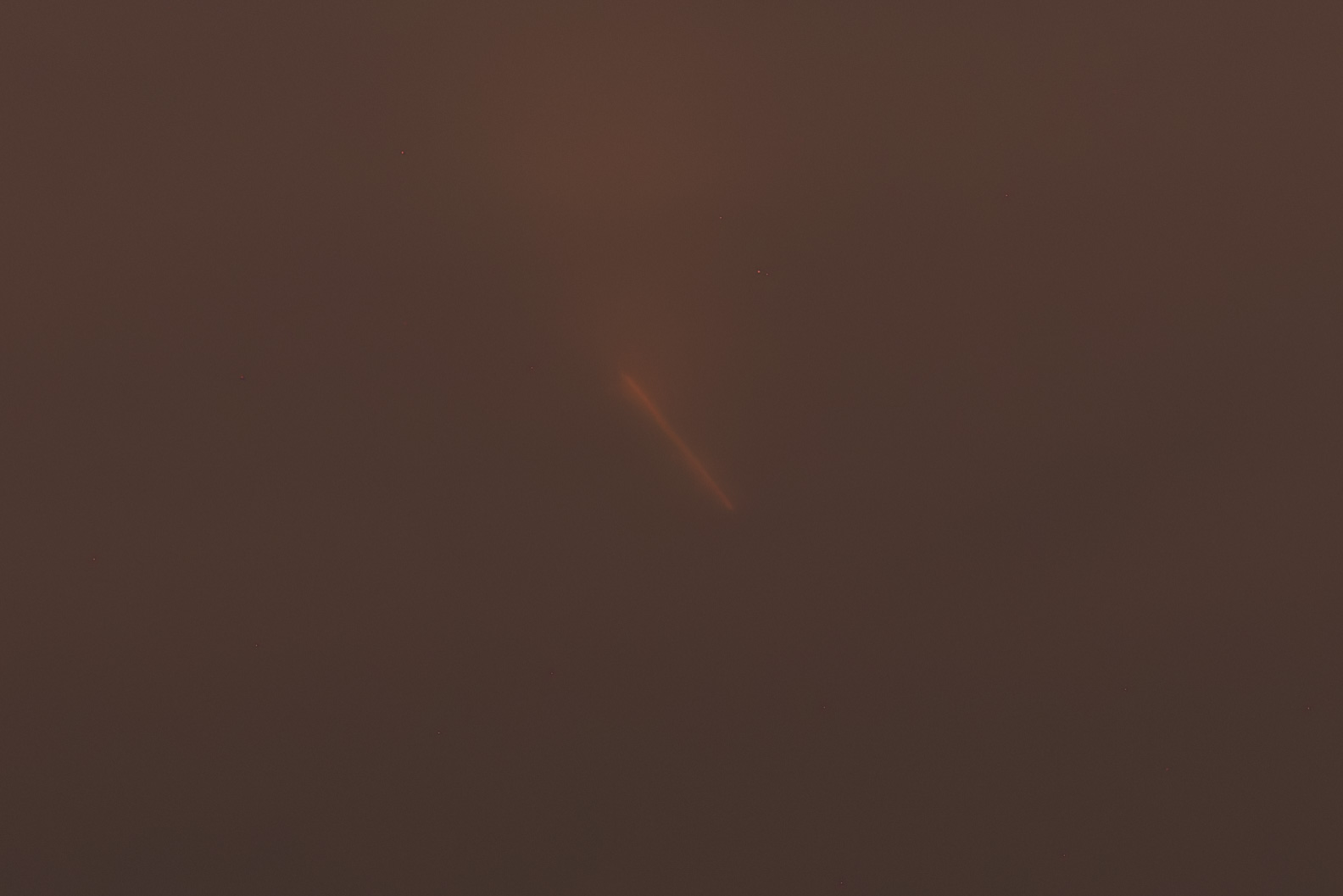
We completely lost the comet for a few minutes. But we picked it up again while doing a 30 second exposure. With our camera and photographic settings, we can take a one second exposure with minimum blurring of the comet, though half a second would have been preferable. At 30 seconds, the comet appears as a diagonal line. We completely lost the comet after around 7:48pm, with the comet likely going behind the mountains around 8pm.
Overall, we at least saw the comet. The combination of clouds and haze near the horizon to the west were pretty unfortunate as the sky was very clear directly above us.
Unrelated to the comet, on our way out of the park, we encountered a juvenile raccoon that likely got partially hit by a car. It seemed that at least one of its hind legs was broken. It was in the northbound travel lane where we came upon it and was flopping around, unable to move away from the road. Two other drivers on the other side had stopped for it and one was in the process of calling to see if any wildlife organizations or the National Park Service would be able to take the animal.
We waited with the woman who dialed for help for awhile, with our car blocking the lane so that the racoon wouldn’t get squished. Unfortunately, the racoon died from its injuries after a few minutes, ceasing to move or breathe.
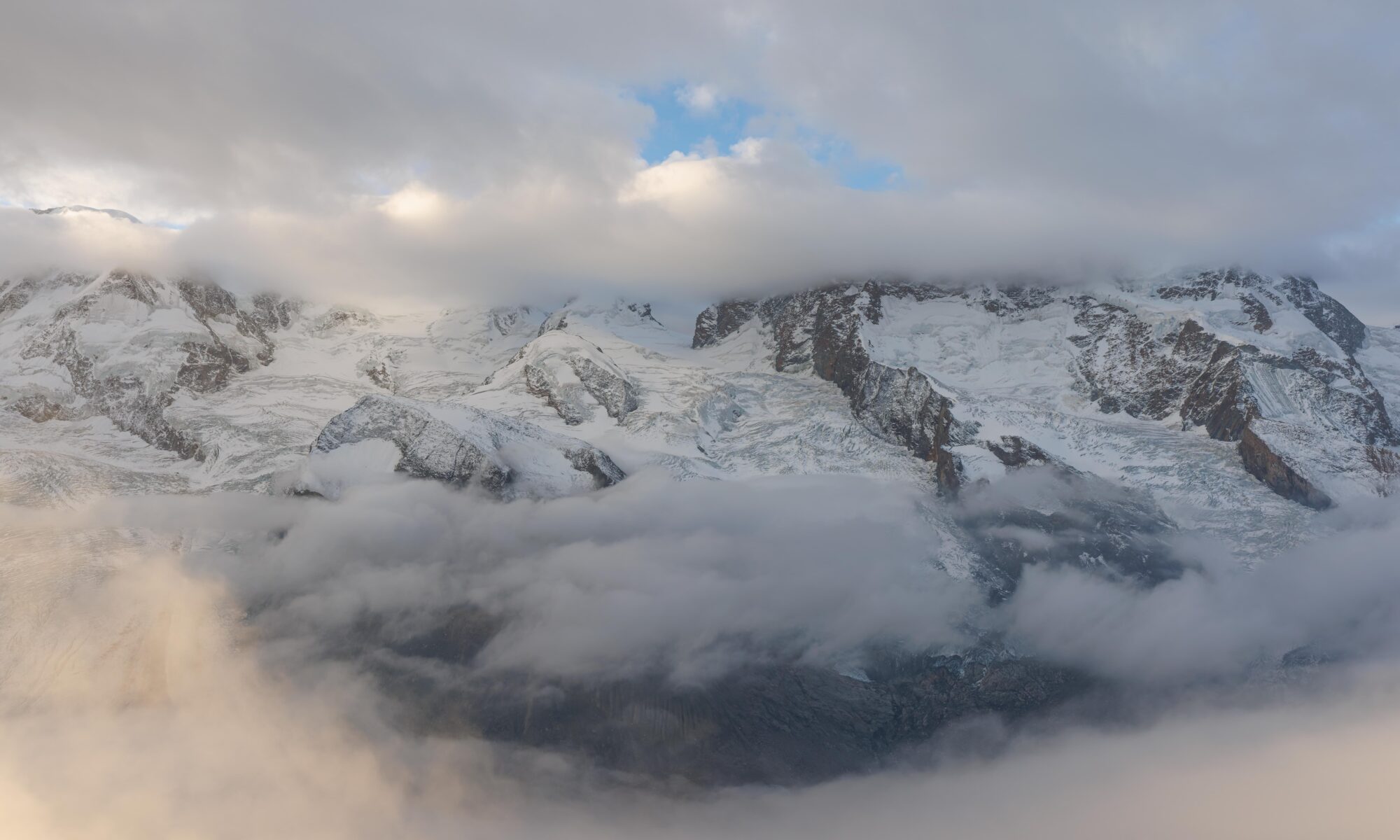

One Reply to “C/2023 A3 (Tsuchinshan-ATLAS) at Shenandoah National Park”